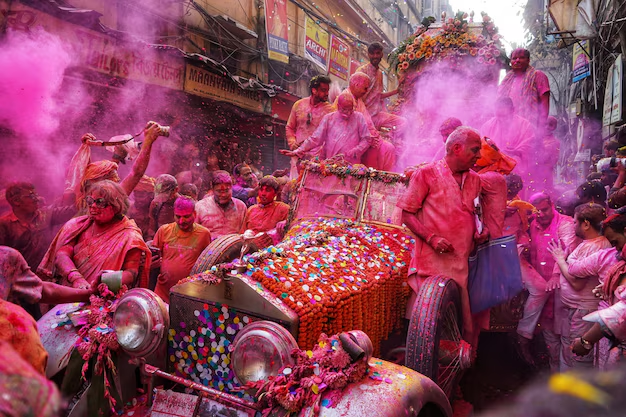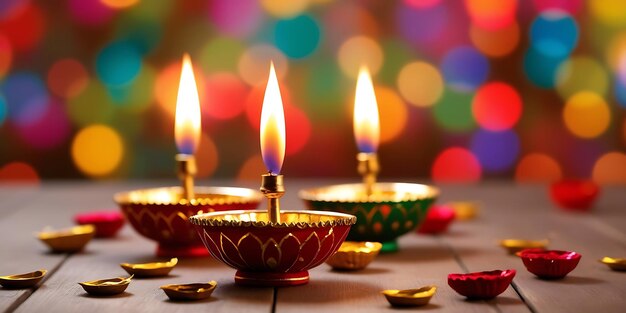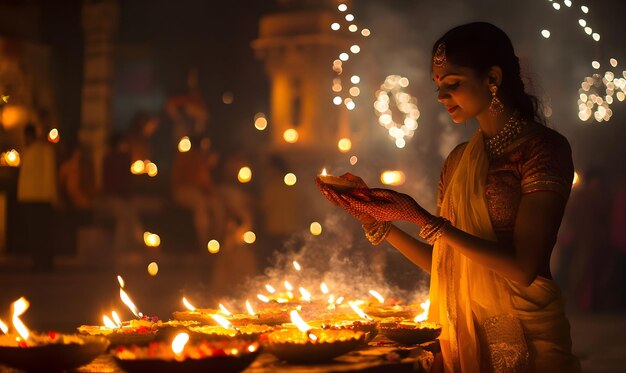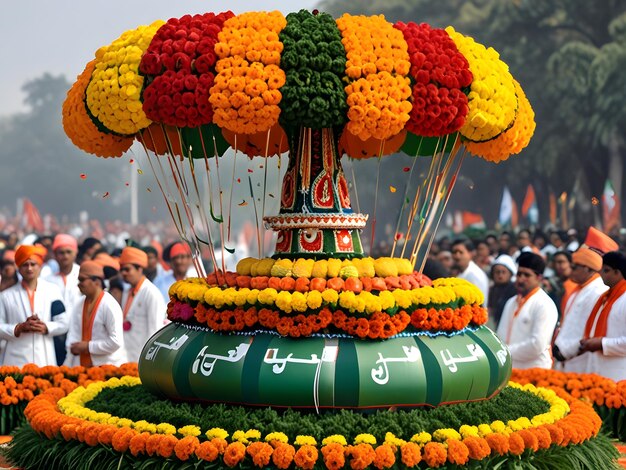
Festivals are an integral part of human culture, serving as a way to bring communities together, celebrate shared values, and preserve traditions. Whether it’s a religious observance, a cultural celebration, or a seasonal gathering, festivals allow people to connect with one another, express joy, and celebrate life’s milestones. From vibrant street parades to quiet, reflective ceremonies, festivals reflect the diversity of human experience, showcasing the unique customs, food, music, and art of different cultures. This article explores the significance of festivals around the world, how they unite communities, and their role in fostering understanding across cultures.
The Power of Festivals in Uniting Communities
At their core, festivals are about coming together to celebrate something important—whether it be faith, heritage, or the changing of seasons. They allow individuals to strengthen their sense of identity and belonging while reinforcing ties within communities. The shared experience of a festival brings people closer, transcending differences and fostering unity through collective enjoyment, rituals, and traditions.
Festivals can also be a powerful tool for social cohesion. In multicultural societies, festivals offer opportunities for diverse groups to showcase their cultural heritage, exchange ideas, and learn from each other. This exchange fosters mutual respect and understanding, helping break down stereotypes and build bridges between communities.
Famous Festivals Around the World
- Carnival (Brazil) Carnival in Brazil is one of the most famous and vibrant festivals in the world. Held annually in the lead-up to Lent, Carnival is marked by colorful parades, samba music, elaborate costumes, and street parties. It’s a time of celebration that brings together people from all walks of life, including locals and tourists, for a display of Brazilian culture, music, and dance. Carnival is not just a party—it’s a celebration of Brazilian heritage, creativity, and unity, attracting millions of participants every year.
- Diwali (India) Diwali, also known as the Festival of Lights, is one of the most widely celebrated festivals in India and by the Indian diaspora worldwide. Diwali marks the victory of light over darkness and good over evil. Families celebrate by lighting oil lamps (diyas), decorating their homes with colorful rangoli (patterns made from colored powders or flowers), exchanging gifts, and enjoying sweets and savory dishes. The festival promotes unity, as communities come together in prayers and celebrations, while also reflecting the rich cultural and religious diversity of India.
- Oktoberfest (Germany) Oktoberfest in Munich is the world’s largest beer festival and a major cultural event in Germany. Held annually from late September to the first weekend in October, the festival attracts millions of visitors from around the world to enjoy traditional Bavarian food, music, and, of course, beer. Beyond the beer tents, Oktoberfest showcases Bavarian traditions, from folk dances and costume parades to horse races and carnival rides. It’s a time for locals and visitors alike to come together and celebrate Bavarian culture and camaraderie.
- Chinese New Year (China and Worldwide) Chinese New Year, also known as the Spring Festival, is one of the most significant holidays in China and is celebrated in many other countries with large Chinese populations. It marks the beginning of the lunar new year and is a time for family reunions, feasts, and honoring ancestors. The celebrations include dragon and lion dances, fireworks, and the giving of red envelopes filled with money for good luck. Chinese New Year unites families, promotes cultural pride, and strengthens community bonds through shared customs, food, and festivities.
- Day of the Dead (Mexico) Día de los Muertos, or the Day of the Dead, is a Mexican holiday that honors deceased loved ones and celebrates their lives. The festival, which takes place on November 1st and 2nd, combines indigenous traditions with Catholic influences. Families create ofrendas (altars) with photos, candles, flowers, and the deceased’s favorite foods to welcome the spirits back for a visit. The celebration is colorful, joyous, and deeply spiritual, emphasizing remembrance and respect. It unites communities in the shared ritual of honoring the past and celebrating life.
- Holi (India and Nepal) Holi, also known as the Festival of Colors, is celebrated in India and Nepal to mark the arrival of spring and the victory of good over evil. People celebrate by throwing colored powders at each other, dancing, singing, and feasting. Holi is a festival that breaks down social barriers, as people of all ages, backgrounds, and statuses come together in joyous celebration. The emphasis on color and joy serves as a reminder of the beauty of life, unity, and renewal.
- Ramadan and Eid al-Fitr (Muslim World) Ramadan is the Islamic holy month of fasting, prayer, and reflection, observed by millions of Muslims around the world. During Ramadan, Muslims fast from dawn to sunset, engage in acts of charity, and strengthen their faith through prayers and community activities. The conclusion of Ramadan is marked by Eid al-Fitr, a festival of celebration, where families gather for large meals, give gifts, and donate to charity. Eid fosters a strong sense of community and solidarity, as it encourages people to come together, support one another, and express gratitude.
- Thanksgiving (United States and Canada) Thanksgiving is a national holiday celebrated in both the United States (on the fourth Thursday of November) and Canada (on the second Monday in October). It originated as a harvest festival, and today it’s a time for families to gather, share a meal, and reflect on their blessings. While each country has its own traditions, both emphasize gratitude, generosity, and community. Thanksgiving is a reminder of the importance of family bonds, cooperation, and the spirit of giving.
- Mardi Gras (United States) Mardi Gras, particularly famous in New Orleans, Louisiana, is a vibrant festival filled with parades, masquerade balls, and street parties. The event is known for its lively music, colorful costumes, and the throwing of beads and other trinkets during parades. While it marks the culmination of Carnival season before the start of Lent, Mardi Gras is a celebration of culture, diversity, and community, bringing people together to enjoy a time of revelry and fun.
- St. Patrick’s Day (Ireland and Worldwide) St. Patrick’s Day, originally a religious holiday honoring Ireland’s patron saint, has evolved into a global celebration of Irish culture. The day is marked by parades, wearing green, and enjoying Irish food and drinks. While it’s a religious occasion for many, St. Patrick’s Day has become a secular celebration that unites people of Irish descent and others in the joyous festivities. Parades in cities around the world, from Dublin to New York, showcase Irish music, dance, and traditions, fostering a sense of community and national pride.
The Impact of Festivals on Society
Festivals do more than just unite people within a community—they can also have a far-reaching impact on society at large. On a local level, festivals can stimulate the economy by boosting tourism, creating jobs, and supporting local businesses. For communities, they provide a space for social interaction, create a sense of pride, and strengthen cultural identity.
Internationally, festivals offer an opportunity for cultural exchange and understanding. They allow people from different backgrounds to experience and appreciate traditions they may not have encountered otherwise. In this way, festivals foster global connections, breaking down cultural barriers and promoting mutual respect.
Conclusion
Festivals are a universal expression of human creativity, joy, and togetherness. They are a celebration of life, culture, and shared values, offering people the chance to reflect, connect, and create lasting memories. Whether it’s through the vibrant colors of Holi, the solemnity of Eid, or the exuberance of Carnival, festivals around the world unite communities, creating bonds that transcend geography, culture, and time. In a world that’s often divided, these celebrations remind us of the power of shared experiences and the importance of coming together to celebrate the richness of human life.



